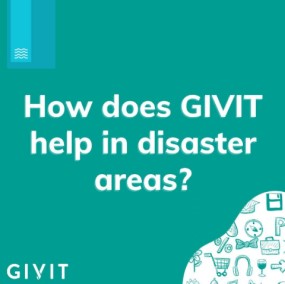Living Here
- Pets and Animals
- Residents
- Report
- Environment
- BackEnvironment
- Air Quality
- Biodiversity
- Biosecurity
- Blue-green algae blooms
- Bushfire Mitigation
- Coasts and Coastal Vegetation
- CoastSnap
- Conservation Programs and Initiatives
- Erosion and Sediment Control
- Feral Animals
- First Nations Fire and Land Officer
- Landfill Gas Abatement
- Mosquitoes
- Pests and Weeds
- Weed Spray Equipment Hire
- Wildlife
- Community Development
- Community Investment
- Services
- Emergencies
Before a Disaster
In a disaster, high winds, fire, or floodwaters can prevent emergency services from reaching you. Debris, damage and fallen power lines can cut road access. You, your family and the community can become isolated for days or weeks. This could mean that you are unable to access supplies and may not be able to get immediate access to help. Simply ask yourself, if you were isolated by a disaster right now, are you ready? If the answer is no, it is time to get disaster prepared.
Step 1 - Understand your risk
Step 2 - Make a household emergency plan
Step 3 - Pack an emergency kit
Various dates and venues.
11am-1pm Sat 8 Nov 2025
In alignment with Get Ready Queensland, Council encourages the community to ‘get ready’ for a disaster in three simple steps.
Step 1 - Understand your risk
The first step to preparing for a natural disaster is to understand your risks to natural disasters. Use Council's Mapping system to find your property to see if it is at risk of flood, bushfire, cyclone or storm tide.
Once you understand your local risk you can consider what you should do to reduce the potential impact of a disaster on your family, your home and possessions.
Check your insurance policy and ensure you have the correct cover to protect your property in case there is damage caused from natural disaster.
For more information on understanding your risk, visit the Get Ready Queensland website.
The Queensland Fire Department can help assess your home / property bushfire risk.
Step 2 - Make a household emergency plan
Before a disaster strikes, you should have a household emergency plan that includes your pets. A household emergency plan helps you and your family know what to do, who to contact and where to seek shelter in a disaster event by containing important information in one spot.
Getting to know your neighbours is an important part of preparing your household, particularly if you live in an area that can lose communication and internet connection during disaster events, or where you get cut off. Neighbours can help each other in many ways and can include people in your street or community. You and your neighbours can work together to prepare your homes, provide shelter and look after pets during a disaster.
When preparing your home and clearing your yard, you can dispose of green waste and general waste at one of Gladstone Regional Council’s Waste Transfer Stations.
As of Thursday, 3 July 2025, the following fees apply:
- $5 flat transaction fee for any domestic green waste at all sites.
- $43 per tonne transaction fee for commercial green waste at Benaraby Landfill and Gladstone Transfer Station (weighbridge sites).
- $8 per cubic metre transaction fee for commercial green waste at Agnes Water Transfer Station (no weighbridge).
For more information on how to make a household emergency plan visit the Get Ready Queensland website.
Prepare your emergency plan Emergency Evacuation Information Packs (in Braille)
Pet emergency plan
In emergencies, pets are often the most vulnerable members of the family. It is important to consider what will happen to our pets during a natural disaster. This means thinking about what plans you can put in place now to make sure your pet is cared for if you are unable to get home, or what you would do with your pet if you had to evacuate.
Prepare your pet emergency plan More information on protecting your pets
Emergency preparedness for people with disability
If you have a disability, Council encourages you to self-assess your preparedness, capabilities and support needs and develop a personal emergency plan to manage your support needs in emergencies, and act together with your support network.
To prepare yourself for a disaster, you can refer to resources from Collaborating 4 Inclusion including their Person-Centred Emergency Preparedness (P-CEP) Workbook. This is a conversation guide for people with disability to tailor emergency preparedness planning to their individual support needs.
Prepare your home, business, pets and livestock
Taking some simple precautions before the onset of any natural hazard will help protect you, your family and your property, including livestock and pets.
Download the home and pet preparation checklist to protect your home from all types of disasters.
You may need to protect your livestock by opening gates and cutting down fences. Microchipping, tagging or branding will also help to identify your pets and/or livestock.
Residents who live in bushfire-prone areas should consider installing a system whereby the pipes that direct the water from the roof to the rainwater tank(s) can be disconnected quickly and easily. This will prevent any material deposited onto the roof surface, as a result of a bushfire, from entering the rainwater tank and impairing the quality of the water stored in the rainwater tank(s).
The disconnection should be made as soon as the threat of a bushfire is apparent to prevent windblown debris from entering the tank and so that evacuation (if required) is not hampered. It may also be worthwhile sealing the openings to the tank to prevent contamination.
Useful links
- Protect your home (from cyclones, severe storms and flooding)
- Protect your business
- Protect your caravan and boat
- Protect your pets
Step 3 - Pack an emergency kit
Natural hazards can cause major disruptions to essential services so it is important to prepare your household emergency kit. Your emergency kit should contain essential items that will equip your household during a disaster. Your kit should be kept in a sturdy, easy to carry bag or waterproof storage box and stored in a safe place that is easy to access.
An emergency kit should contain the basic items to last your family at least three days in case you have to stay at home or evacuate your home. Some key items to include are:
- Long life food and toiletries, including toilet paper and wipes
- Drinking water in case the water supply stops working
- Batteries, a torch and radio in case the power goes out
- Essential medications (and keep your script with your pharmacy).
For more information on what to pack in an emergency kit, visit the Get Ready Queensland website.
Don’t forget to pack a pet emergency kit with necessities for your pet to last at least five days, so that you can act quickly during an emergency.
Information sheets, guides and translated information is available online Safety and Education resource library | Queensland Fire Department including a link to emergency information packs in Braille.
These Braille packs have been developed for use across Australia and feature the basic information on making a plan and preparing an emergency kit to foster preparedness in the face of an emergency.
Living Here
- Pets and Animals
- Residents
- Report
- Environment
- BackEnvironment
- Air Quality
- Biodiversity
- Biosecurity
- Blue-green algae blooms
- Bushfire Mitigation
- Coasts and Coastal Vegetation
- CoastSnap
- Conservation Programs and Initiatives
- Erosion and Sediment Control
- Feral Animals
- First Nations Fire and Land Officer
- Landfill Gas Abatement
- Mosquitoes
- Pests and Weeds
- Weed Spray Equipment Hire
- Wildlife
- Community Development
- Community Investment
- Services
- Emergencies
Latest news on Disaster Information
View news items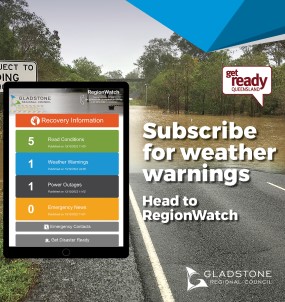
RegionWatch
RegionWatch is our community’s online platform for reliable, up-to-date and vital information during emergencies and disasters.
Visit RegionWatch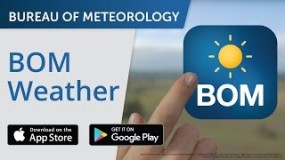
For all the latest information from the Bureau of Meteorology
Download this free app today
It's a great time to get packing - Include food, water, medications, bedding and important documents such as vaccination certificates and Council registrations in your pet emergency kit.
More Information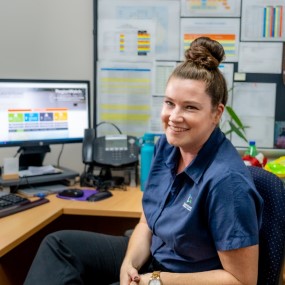
#ProudlyGRC - Meet Emma Catlin
More information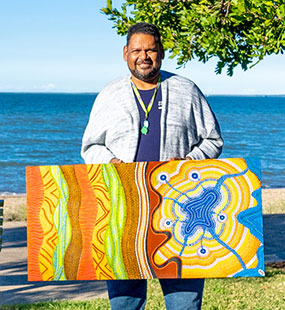
Gira (Geera)-Fire, Nguma (Ngooma) - flood) by artist Jarrod Beezley, 2022
More InformationGladstone Regional Council
Connect. Innovate. Diversify.
Get in Touch
Phone
(07) 4970 0700
Opening Hours
8.30am - 5pm Monday to Friday
Social media
Postal Address
PO Box 29, Gladstone Qld 4680
Council Offices
101 Goondoon Street, Gladstone Qld 4680
3 Don Cameron Drive, Calliope Qld 4680
41 Blomfield Street, Miriam Vale Qld 4677
Cnr Wyndham & Hayes Avenues, Boyne Island Qld 4680
Rural Transaction Centres
71 Springs Road, Agnes Water Qld 4677
47 Raglan Street, Mount Larcom Qld 4695
Footer Acknowledgement
Gladstone Regional Council would like to acknowledge the Bailai, the Gurang, the Gooreng Gooreng and the Taribelang Bunda people who are the traditional custodians of this land. Gladstone Regional Council would also like to pay respect to Elders both past, present and emerging, and extend that respect to other Aboriginal and Torres Strait Islander people. Learn more about Council's Reconciliation Action Plan (RAP).
Chat Popup
All content © Gladstone Regional Council. All Rights Reserved.
Back to the top


